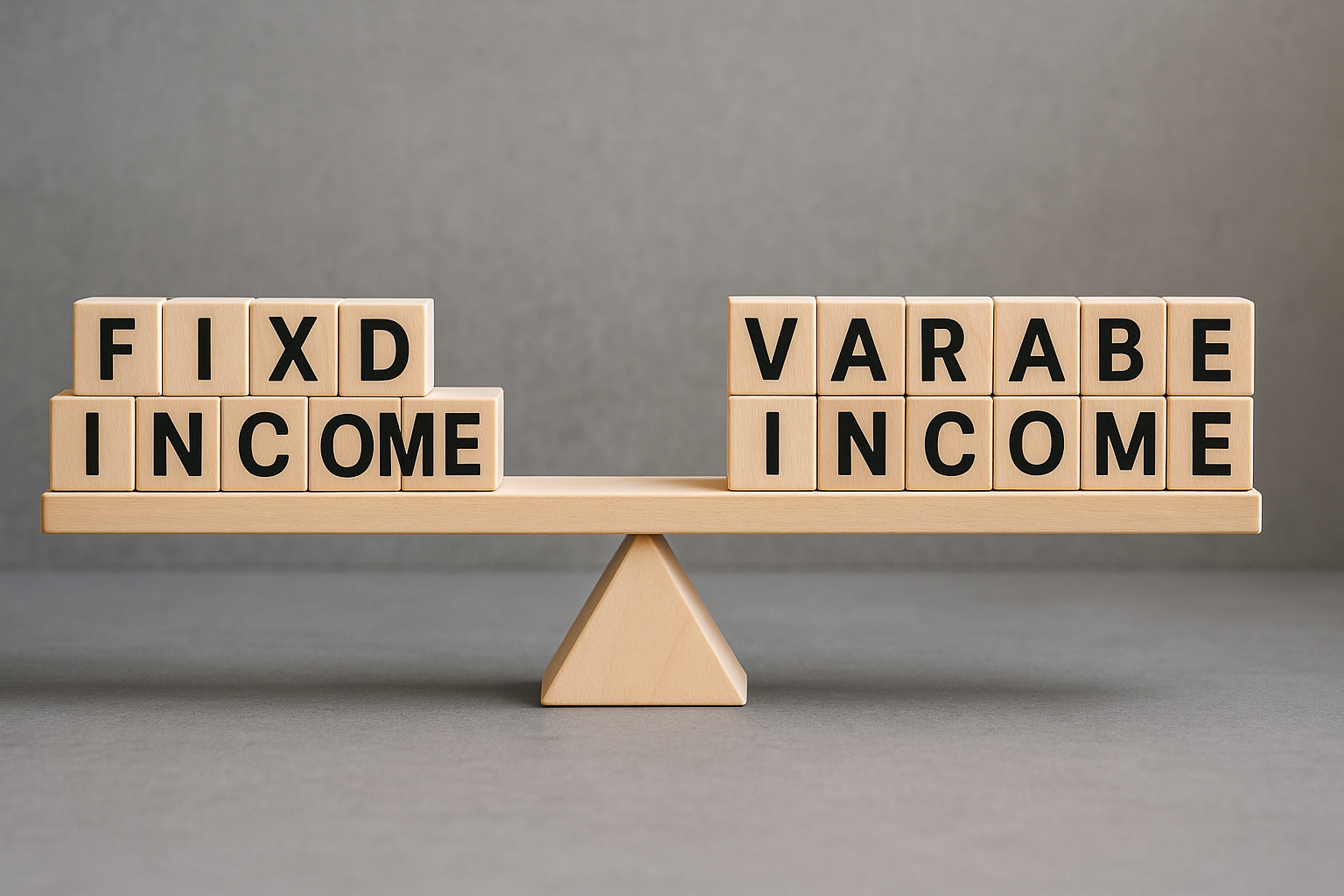When it comes to investing, one of the first decisions beginners face is whether to choose fixed income or variable income investments. Understanding the difference between these two categories is essential for building a solid and balanced portfolio that aligns with your financial goals, risk tolerance, and time horizon.
In this guide, we’ll break down the key differences between fixed and variable income, discuss their pros and cons, and help you decide which is right for your situation.
What Is Fixed Income?
Fixed income investments are those that provide a predictable and regular return, usually in the form of interest payments. These investments are considered less risky than variable income options because their returns are generally stable.
Common Examples of Fixed Income Investments:
- Government bonds (e.g., U.S. Treasury Bonds)
- Corporate bonds
- Certificates of Deposit (CDs)
- Treasury Bills
- Fixed-rate savings accounts
Key Features:
- Predictable Returns: You know the interest rate or yield in advance.
- Lower Risk: Fixed income assets are generally safer.
- Capital Preservation: Ideal for conservative investors aiming to protect their principal.
What Is Variable Income?
Variable income investments, on the other hand, do not offer guaranteed returns. The income generated depends on market performance, which means the value of your investment can rise or fall over time.
Common Examples of Variable Income Investments:
- Stocks (equities)
- Mutual funds
- Exchange-traded funds (ETFs)
- Real estate investment trusts (REITs)
- Cryptocurrencies
Key Features:
- Higher Return Potential: You can earn more if the market performs well.
- Increased Risk: Returns fluctuate with market conditions.
- Capital Growth: Ideal for long-term investors seeking appreciation.
Comparing Risk Levels
One of the most fundamental differences between fixed and variable income lies in the level of risk involved.
- Fixed income: Suitable for risk-averse investors. You’re less likely to lose money, but the returns are typically modest.
- Variable income: Carries higher risk due to market volatility. However, this comes with the possibility of significantly higher returns over time.
Comparing Returns
- Fixed income: Offers steady but lower returns. Good for maintaining wealth and generating income in retirement.
- Variable income: Offers the possibility of higher long-term gains, but short-term losses are possible.
Liquidity Differences
- Fixed income: Often less liquid. For example, if you buy a bond, you may have to hold it until maturity to avoid penalties or losses.
- Variable income: Many variable income investments like stocks or ETFs are more liquid, meaning you can buy and sell them relatively quickly.
Tax Implications
- Fixed income: Interest earned is often taxable as ordinary income.
- Variable income: Dividends and capital gains may be taxed differently, depending on your country and investment type. Long-term gains typically receive favorable tax treatment.
Who Should Choose Fixed Income?
Fixed income investments are ideal for:
- Conservative investors
- Retirees seeking regular income
- People with short-term financial goals
- Investors building an emergency fund
Who Should Choose Variable Income?
Variable income investments suit:
- Long-term investors
- Younger individuals with time to recover from market dips
- Those aiming for higher returns
- People comfortable with risk and market fluctuations
Building a Balanced Portfolio
Many financial advisors recommend a combination of both fixed and variable income investments to balance risk and reward.
Example Strategy:
- Younger investors (20s–30s): 70% variable income, 30% fixed income
- Mid-career (40s–50s): 50/50 balance
- Near retirement or retired: 30% variable income, 70% fixed income
This approach allows you to grow your wealth while protecting against large losses.
Final Thoughts: Know Your Profile Before Choosing
There is no one-size-fits-all answer when choosing between fixed and variable income investments. The best strategy depends on your personal financial goals, age, income needs, and risk tolerance.
Take the time to evaluate your profile, research your options, and consider diversifying across both categories to enjoy a more stable and profitable investment journey.

